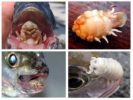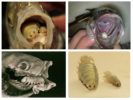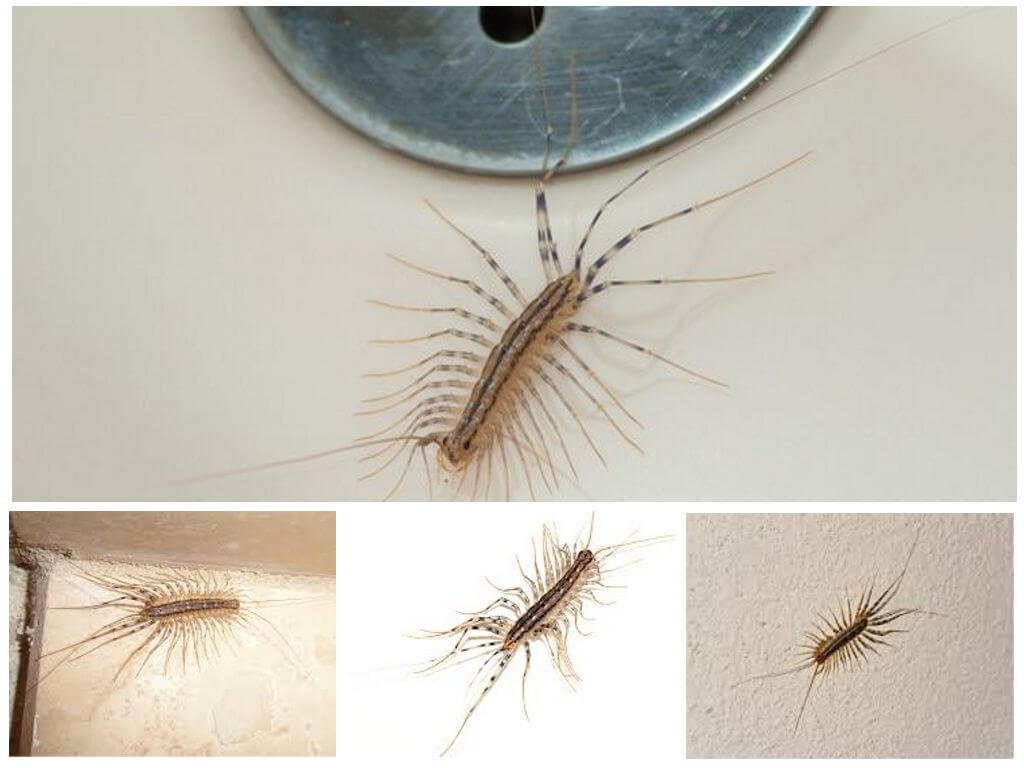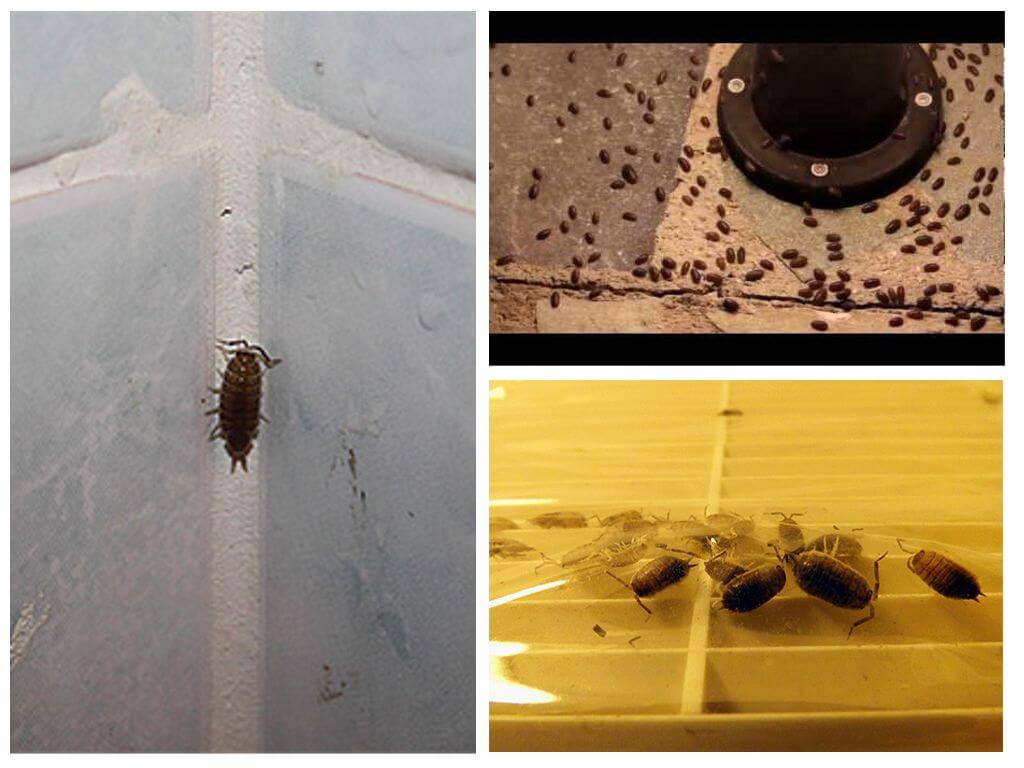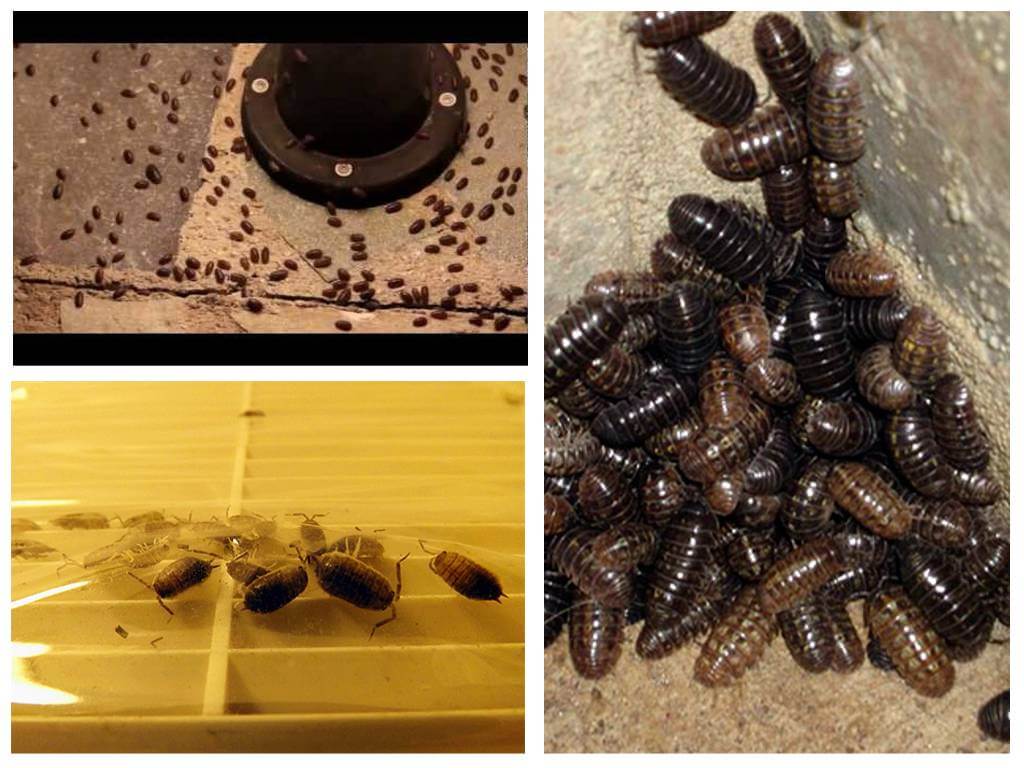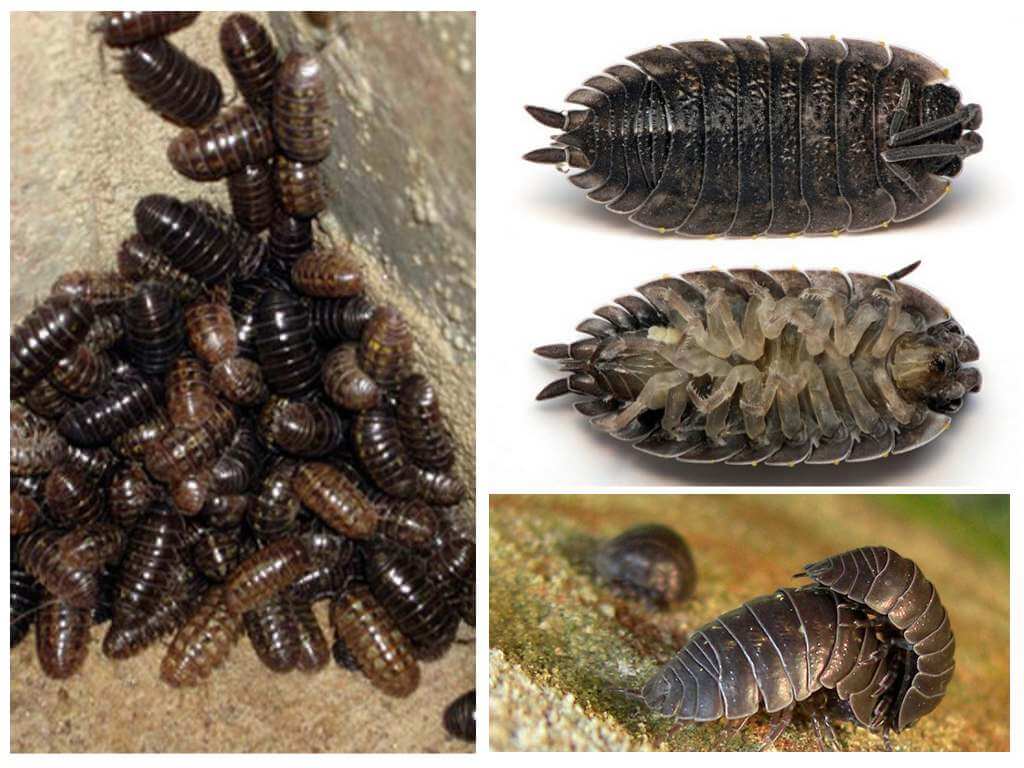- Tongue wood lice
- Woodlouse devouring tongue
In nature, there are many animals that lead a parasitic lifestyle. Many of them became famous due to their unusual lifestyle. An example of this is a woodworm eating a tongue - a fairly popular animal that has gained fame for its unique ability to take root on the host’s body. She not only feeds on the blood of her victim, but also subsequently completely replaces her affected organ. Such a crustacean does not live in humans, it parasitizes only in the mouth of fish.
Features of lingual cancer
In nature, there are many species of Cymothoa, but only Cymothoaexigua (in English, tongue-eatinglouse, which means woodworm eating a tongue) can eat and replace an organ.
The crustacean became known to the world because of its unique ability to parasitize on the host's body. Today it is the only creature that can completely replace an organ lost through its own fault. In appearance, it is very reminiscent of wood licethat start in damp basements, in attics and in the apartments themselves. A distinctive feature of the crustacean is a milky body.
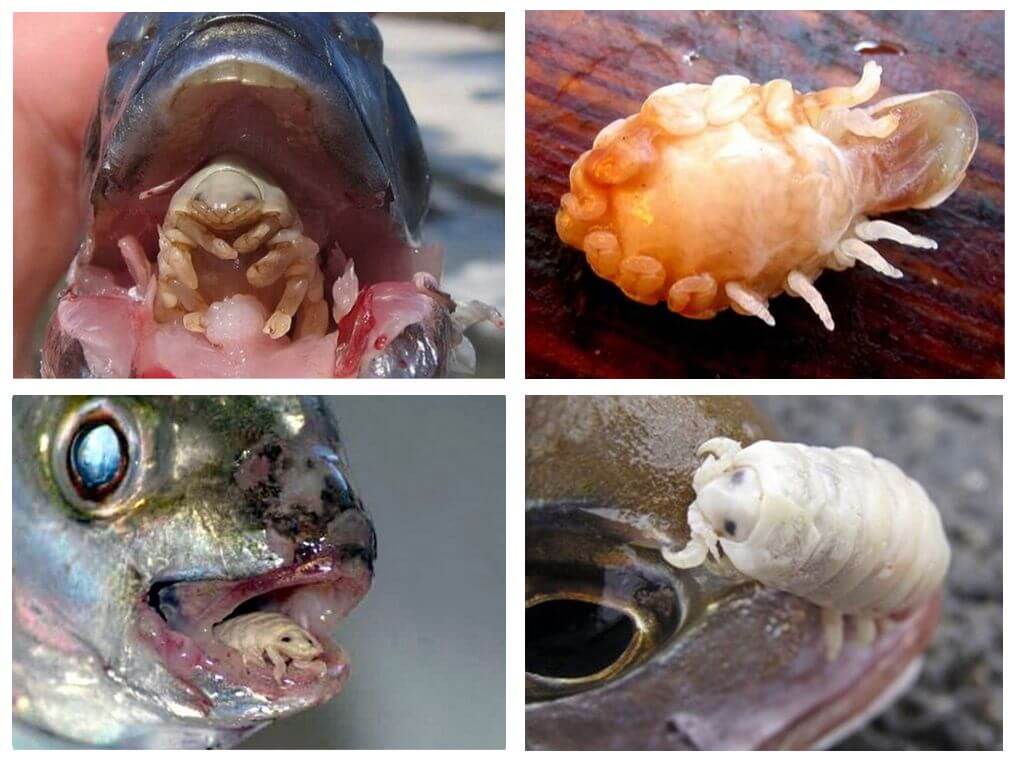
As its victim, the parasite chooses a pink snapper that lives off the coast of California. Getting into the fish mouth through the gills, with the help of special claws, a small crustacean instantly attaches to the tongue. At the initial stage of parasitism, the main source of nutrition of the pest is blood sucked from the tongue.
By becoming gradually bloodless, the organ eventually completely atrophies. However, the fish does not die, from this moment the “settler” himself begins to play the role of the tongue. Many will think that in this way the crustacean will absorb all the prey of the host. However, this is far from the case: wood louse continues to live in fish, without interfering with its nutrition. All the food consumed by the victim passes by the crustacean. The animal partially drinks the blood of the victim and is content with fish mucus, without causing it much damage and discomfort. According to scientists, snapper uses the services of a parasite, not even realizing the substitution.
Breeding
Females reach a length of up to 3 cm, males - up to 1.5 cm. Below in the photo you can see how these amazing animals look.
Wood lice are propagated directly in the mouth of the fish. Periodically, through the gills, a sexually mature male swims in the mouth of the fish and mates with the female living there. After that, eggs are laid on the abdomen of a female in a special pocket, where they are hatched. Appeared babies leave the place of birth. They go in search of a victim in whose mouth they will spend their lives.
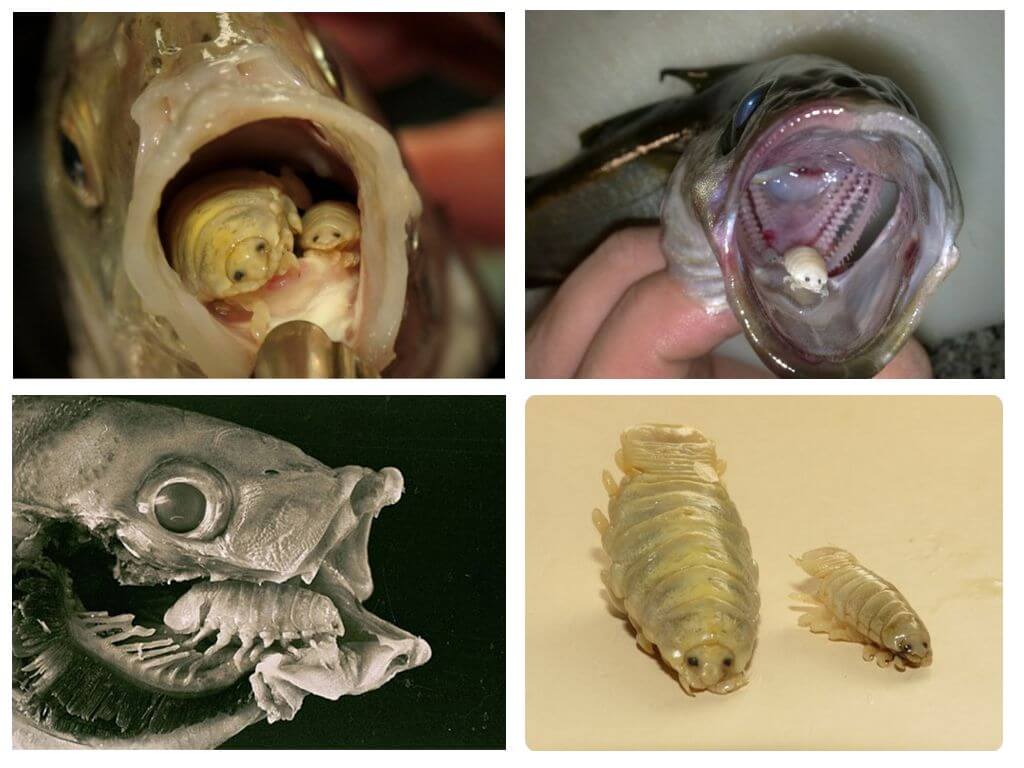
It is also surprising that while the linguistic wood louse is growing, it is a male. Penetrating into the oral cavity of the snapper, she transforms into a female.
On a note! Woodworms devouring the tongue never change their native speakers: once settled in the mouth of a fish, they no longer leave it. The victim does not object to such a “neighborhood”, using the parasite as its own language.
Having reached maturity, the crustacean dies, but the atrophied fish tongue does not restore its efficiency. Lucian only has to hope that another similar individual will take this place.
Sometimes lingual wood lice can settle in the mouth of large fish in pairs. The victim uses them as his own language, not realizing a replacement.
Is lice lice dangerous for humans?
Cymothoaexigua does not pose a danger to humans, causing only a feeling of disgust and disgust. However, when you try to pull it out of the caught fish, you can bite the fisherman by the finger. The animal retains activity throughout its life. The bite of the parasite is not strong, but it is still preferable to use any tool for such a procedure. Yes, and the sight of an unpleasant creature can confuse any angler who happened to catch fish with a "surprise".
Until 2005, it was believed that the lice wood lice lived only in the eastern Pacific Ocean off the coast of California, until a similar specimen was found in the UK. According to researchers, the habitat of the crustacean parasite began to expand over time. However, there is no exact data on the location of this creature. It could well get into the country, being inside the snapper itself.
